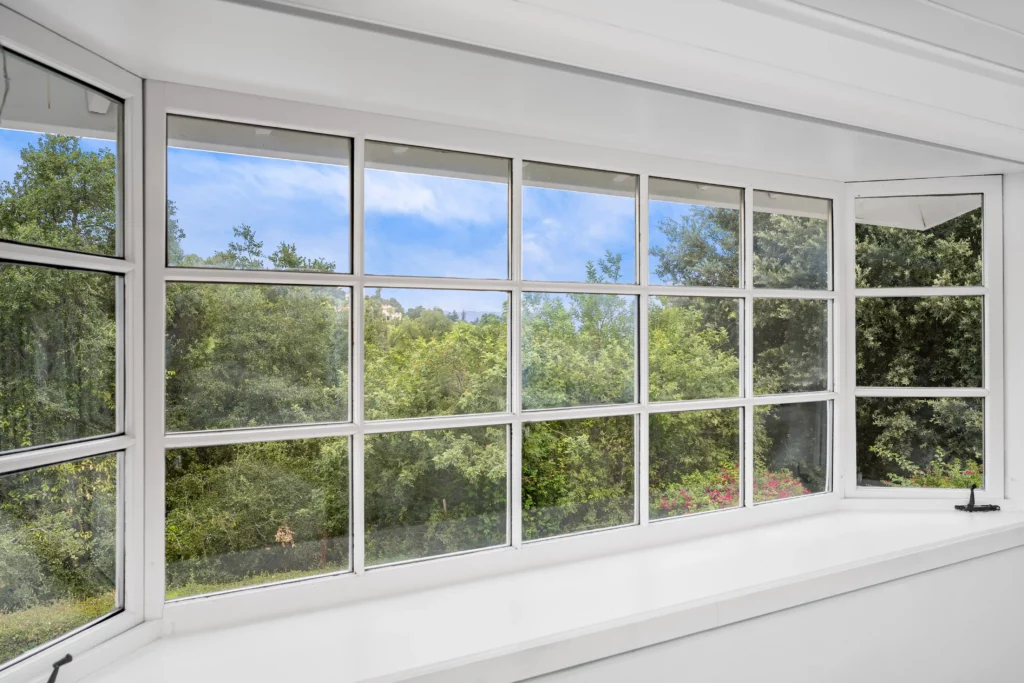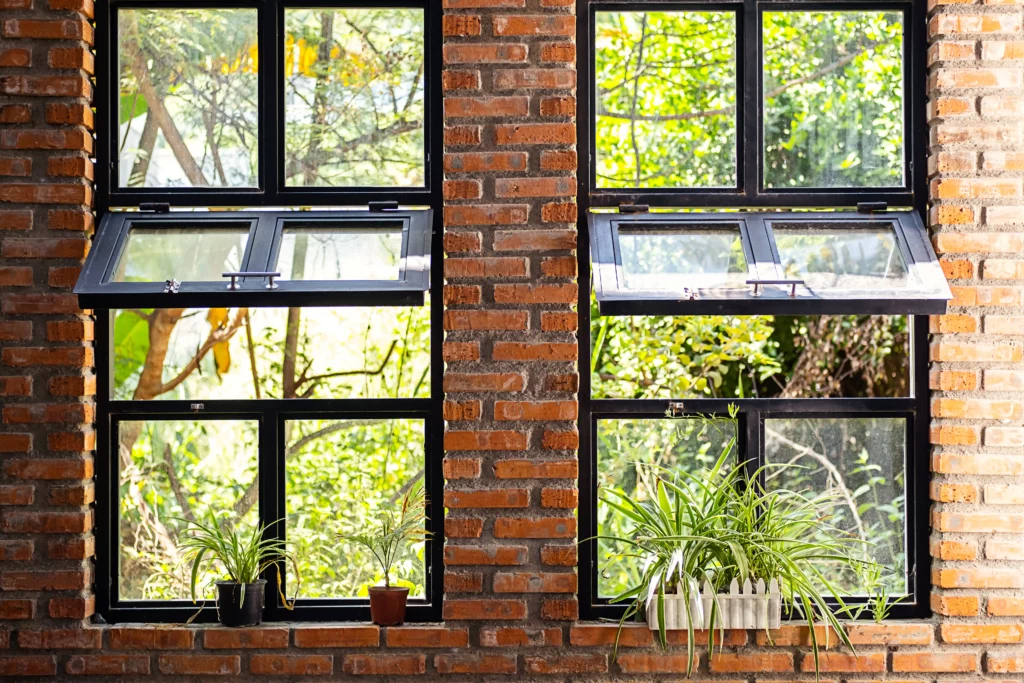Living in Florida, you’ve probably wondered about hurricane windows vs regular windows. This question comes up a lot, especially since hurricanes caused eight of the ten most expensive natural disasters in U.S. history here. These aren’t your regular windows – they’re specially designed to handle extreme winds and flying debris. The numbers speak for themselves – they can cut down water damage by 77–87% during a hurricane.
Your home’s protection depends on understanding the difference between standard and impact windows. The sort of thing we love about hurricane impact windows is their laminated glass design. It stays intact even when objects hit it at 50 feet per second. These windows go through thorough testing and this is a big deal as it means that they meet Florida’s strict building codes. The investment makes sense too. Homeowners can save 10–25% on insurance premiums, plus they’ll see better energy efficiency in their homes.
Florida homeowners need to think over both performance and costs before making a decision. Each window costs between $800 and $2,800 with installation – of course that’s more than regular windows. But there’s another reason these windows are worth looking at – they’re a great way to get better security and cut down on outside noise. This piece will help you pick the right windows to protect your home and give you the best value.
Materials and Construction: Hurricane vs Regular Windows
The main difference between hurricane and regular windows comes down to how they’re built. Hurricane windows use special materials that can handle extreme weather. Regular windows don’t offer much protection when severe storms hit.
Glass Composition: Laminated vs Single Pane
Hurricane windows use laminated glass technology that sandwiches two or more glass layers with a polyvinyl butyral (PVB) or ethylene-vinyl acetate (EVA) interlayer. This design creates a strong barrier that keeps glass pieces together after an impact. The glass doesn’t shatter – it forms a “spider web” pattern and stays in the frame.
Regular windows usually have single or double-pane glass without any reinforcement. These windows break easily and scatter dangerous glass pieces everywhere. They can’t protect against flying debris or strong winds during hurricanes.
Frame Strength and Durability Differences
Window frames are just as important as the glass:
- Aluminum frames are strong yet light, which makes them perfect for hurricane protection. They resist corrosion well in coastal areas.
- Vinyl frames insulate better but aren’t as strong as aluminum.
- Fiberglass frames give you both durability and good insulation. They don’t warp in extreme weather.
Standard windows often use wood or simple vinyl frames that don’t last long in storms. Hurricane window frames have extra hardware at the corners to attach them firmly to the building.

What Are the Strongest Hurricane Windows Made Of?
The toughest hurricane windows combine several layers of tempered glass with thick PVB interlayers. Tempered glass is four times stronger than regular annealed glass. The most durable impact windows combine both tempered and laminated glass to create an extremely strong barrier.
High-quality hurricane windows must pass tough tests, like withstanding a 2×4 flying at 50 feet per second. These high-end windows usually have aluminum or steel frames instead of vinyl because metal is much stronger structurally.
Performance in Storms: Which Windows Hold Up?
Storms make the differences between hurricane and regular windows crystal clear. Hurricane impact windows go through tough tests that regular windows could never handle.
Impact Resistance: Flying Debris and Wind Pressure
Flying debris poses one of the biggest threats during hurricanes. Hurricane windows must pass strict tests where a 9-pound 2×4 is fired at 50 feet per second (34 mph) straight at the window. The glass might crack after impact, but the polymer interlayer keeps all shattered pieces together and stops dangerous breaches. Some regions like Louisiana take testing even further – their windows need to survive impacts at nearly 55 mph.
These specialized windows also need to handle thousands of cycles of positive and negative pressure that copy hurricane-force winds up to 200 mph. This repeated testing makes sure the window stays secure in its frame during bad weather.
How Are Hurricane Windows Rated For Wind Speed?
Hurricane windows come with Design Pressure (DP) ratings that show how well they stand up to storms. Every ten-point jump in DP rating roughly matches one hurricane category level. Here’s how it works:
- DP 20: Withstands Category 2 hurricane (96–110 mph)
- DP 40: Withstands Category 4 hurricane (130–156 mph)
- DP 50: Withstands Category 5 hurricane (157+ mph)
The Saffir-Simpson Hurricane Wind Scale says Category 5 hurricanes have winds over 157 mph. Top-quality hurricane windows with DP 50 or higher ratings protect against these worst storms.
Do You Need Shutters If You Have Hurricane Windows?
Good hurricane impact windows remove the need to prep for storms. They work better than traditional shutters that you have to put up manually before storms—often when time is short. Some homeowners still choose both systems in high-risk coastal areas to get the most protection possible. While hurricane windows alone meet most building codes in storm-prone areas, adding shutters gives you an extra layer of defense when you really need it.
Beyond Storms: Everyday Benefits of Hurricane Windows
Hurricane impact windows do more than just protect against storms. Florida homeowners get year-round benefits that make these windows worth the investment. The practical advantages often help homeowners decide if the installation costs make sense for their long-term value.
Energy Efficiency and Climate Control
The multiple glass layers in hurricane windows create excellent insulation. They prevent air leaks and help your AC system work better. ENERGY STAR certified windows can cut your energy bills substantially – reducing household energy costs by an average of 12%.
The special glass and frame design creates a thermal barrier that works year-round:
- Keeps room temperatures steady
- Stops hot spots near windows in summer
- Blocks cold drafts in winter
- Balances your indoor climate
Low-E coatings on hurricane windows can cut energy loss by up to 40%. This makes them valuable for Florida’s hot weather.
Noise Reduction in Urban and Coastal Areas
Hurricane windows use laminated glass that absorbs sound waves. This creates a quieter home environment. Regular single-pane windows have Sound Transmission Class (STC) ratings of 18–20. Hurricane impact windows rate much higher at 32–35. These windows work well to block out:
- Traffic and emergency sirens
- Construction noise
- Lawn equipment
- Dogs barking and neighborhood sounds
UV Protection and Interior Preservation
The special layer in hurricane impact glass blocks 99% of harmful UV rays. Your furniture, floors, and artwork stay protected from sun damage and fading. This protection adds real value since sun exposure can damage expensive furnishings over time.
Security Benefits: Are Hurricane Windows Harder to Break?
These windows protect your home from break-ins around the clock. Even when cracked, the laminated construction prevents shattering. This makes forced entry extremely difficult. The strong frames and special locks create extra security against intruders. Homeowners feel safer after installing these windows because they get constant protection without extra security measures.
Cost Comparison and Long-Term Investment
Homeowners in Florida face one of their most important financial decisions when choosing hurricane windows. You might be surprised by the price gap between standard and impact-resistant options. The good news? The long-term financial benefits make up for your original investment.
Upfront Cost: Hurricane vs Regular Windows
The price difference between hurricane and regular windows is a big deal. Hurricane impact windows cost about $120 to $140 per square foot, while regular windows cost $50 to $80 per square foot. A complete home installation with about 10 windows will set you back $12,000 to $18,000 for hurricane windows. Regular windows cost $300 to $700 per window. This means you’ll pay 20% to 40% more for impact-resistant options.
Insurance Savings and Tax Credits
Hurricane windows can slash your insurance premiums by up to 45% on your policy’s windstorm portion. Florida law (Statute 627.0629) makes insurance companies offer premium discounts for homes with hurricane protection. On top of that, you can save through:
- Federal tax credits that cover 30% of window costs up to $600
- Florida’s sales tax exemption on impact windows (good through June 30, 2024)
- The My Safe Florida Home program offers matching grants up to $10,000

Are Hurricane Windows Required in Florida Homes?
The Florida Building Code requires hurricane protection for homes built after 2001. Miami-Dade County and other High-Velocity Hurricane Zones (HVHZ) have stricter rules. Florida homes must have either impact windows or hurricane shutters to meet building codes.
Return on Investment: Resale and Value Boost
Hurricane windows are a smart investment that end up delivering an ROI between 80% to 86%. This is much better than hurricane shutters, which top out at 40%. Your home’s value gets a real boost with impact windows – homeowners often get back 125% of their costs when selling. Add yearly energy savings of $125 to $465, and these windows prove to be a solid long-term investment for Florida properties.
Comparison Table
| Feature | Hurricane Windows | Regular Windows |
| Glass Construction | Laminated glass with PVB/EVA interlayer | Single or double-pane without reinforcement |
| Frame Materials | Aluminum, reinforced vinyl, or fiberglass | Simple wood or vinyl |
| Impact Resistance | Withstands 2×4 at 50 feet per second | Breaks easily on impact |
| Wind Speed Rating | Up to 157+ mph (Category 5) | Not rated for hurricane conditions |
| Water Intrusion | Reduces by 77–87% during storms | No specific protection |
| UV Protection | Blocks 99% of UV rays | Not specified |
| Sound Rating (STC) | 32–35 | 18–20 |
| Energy Efficiency | Up to 40% reduction in energy loss | Simple efficiency |
| Cost per Square Foot | $120–$140 | $50–$80 |
| Insurance Benefits | 10–25% premium discount | None |
| Installation Cost (per window) | $800–$2,800 | $300–$700 |
| Breaking Pattern | Spider web pattern, stays in frame | Shatters into pieces |
| Additional Protection Needed | No shutters required | Needs storm shutters |
| Building Code Compliance | Meets Florida Building Code | Does not meet hurricane requirements |
Built for Storms. Designed for Peace of Mind. Choose Window Replacement Group.
Choosing between hurricane windows and regular windows isn’t just about aesthetics—it’s about safety, savings, and long-term peace of mind. Florida’s severe weather demands more than standard glass panes. Hurricane impact windows are engineered with laminated glass, tough interlayers, and reinforced frames that stand up to flying debris and intense wind pressure—something regular windows simply can’t handle.
Plus, they’re always on guard—no shutters or last-minute scrambling needed.
But the benefits don’t stop with storm protection. Hurricane windows also insulate your home from noise, block 99% of harmful UV rays, and help lower your monthly energy bills. Yes, the initial investment—typically between $800 and $2,800 per window with installation—may be higher, but the returns speak for themselves: reduced insurance premiums, potential tax credits, boosted home value, and compliance with Florida’s strict building codes.
The bottom line? Hurricane impact windows aren’t just a smart upgrade—they’re essential for Florida living.
Ready to Fortify Your Florida Home?
Don’t wait for the next storm warning to take action. At Window Replacement Group, we specialize in high-quality hurricane window installation that delivers real protection and real value. Our team handles everything from expert product selection to flawless installation—so you get peace of mind, start to finish. Contact us today for a free consultation and protect your home the right way.






